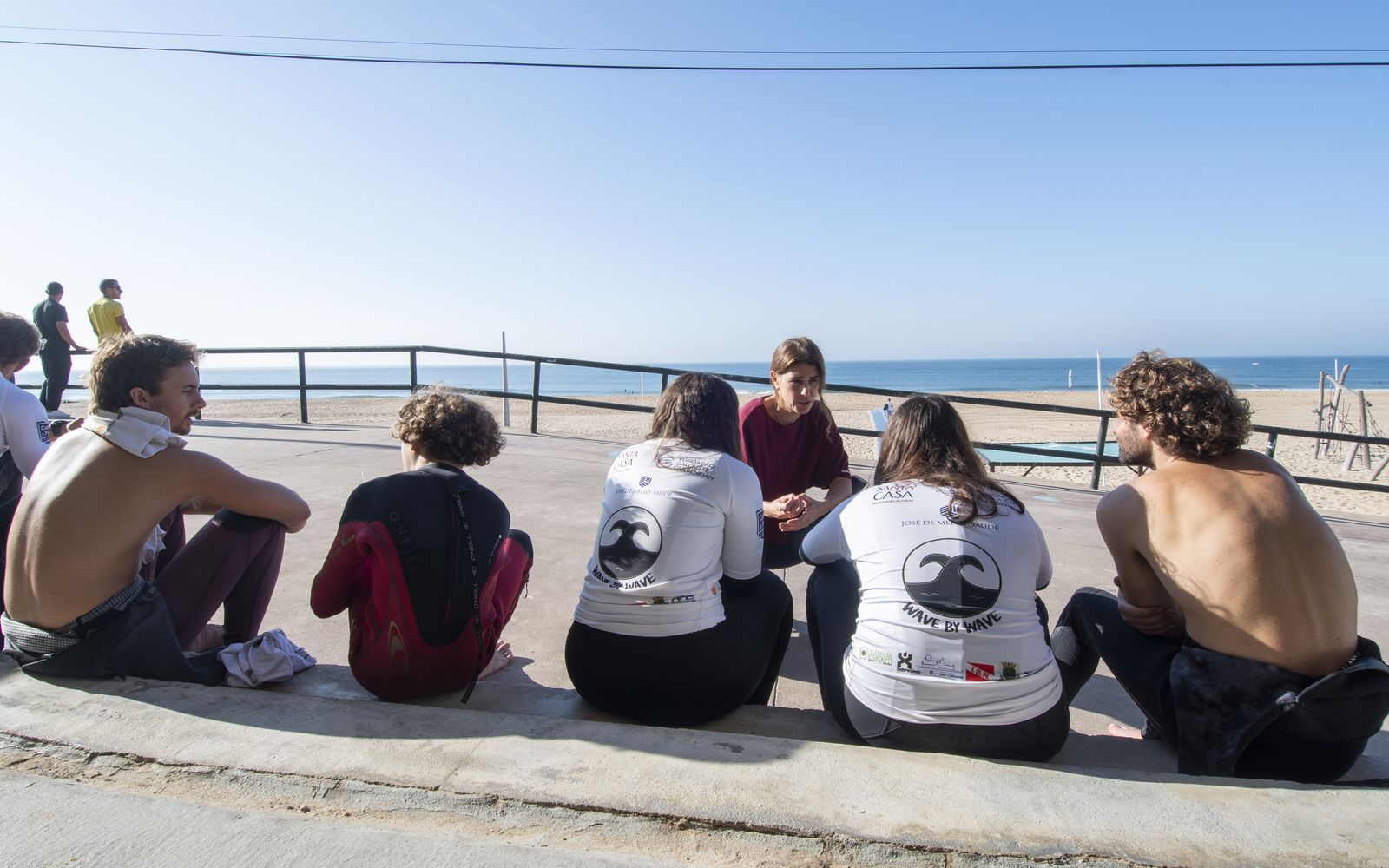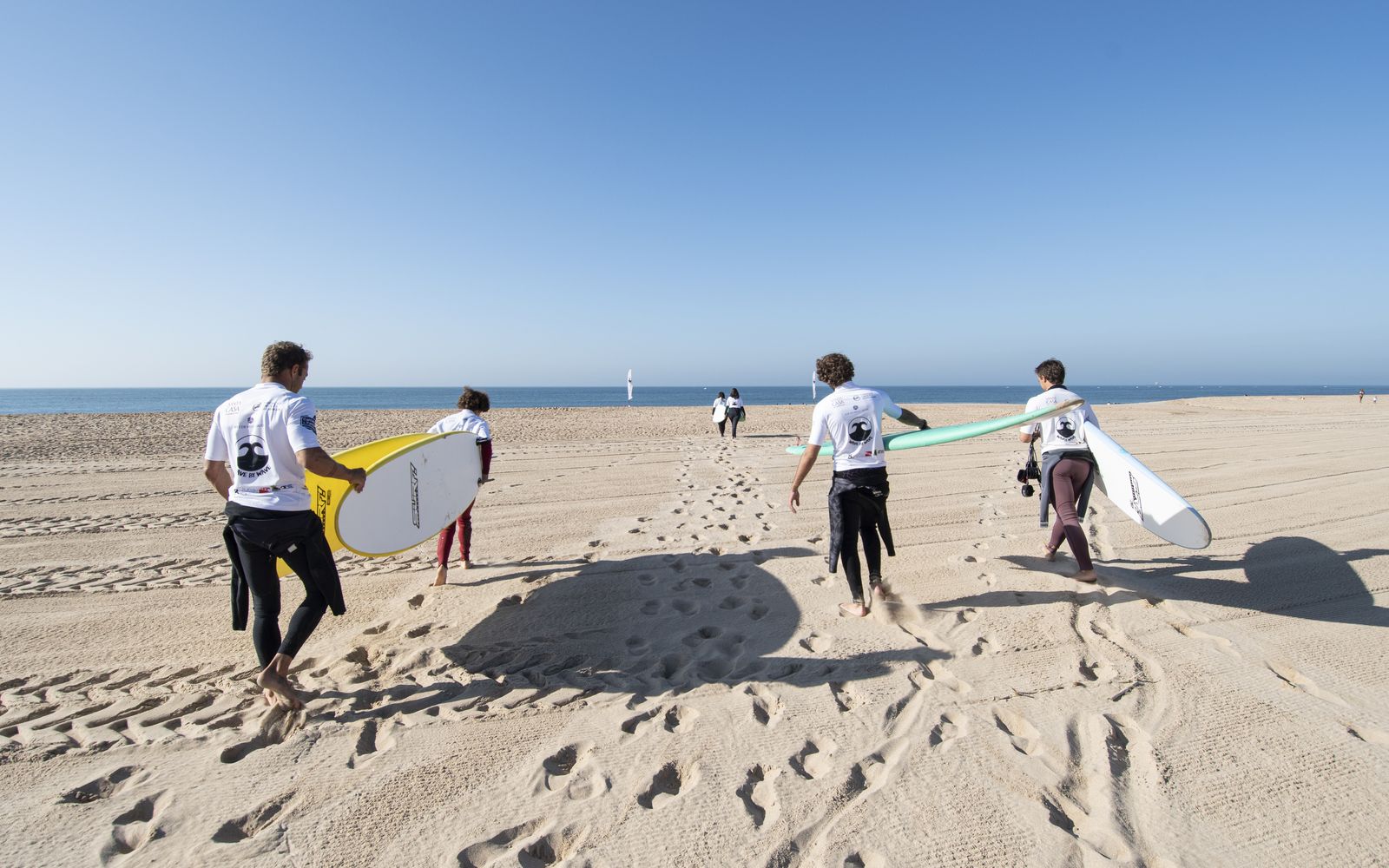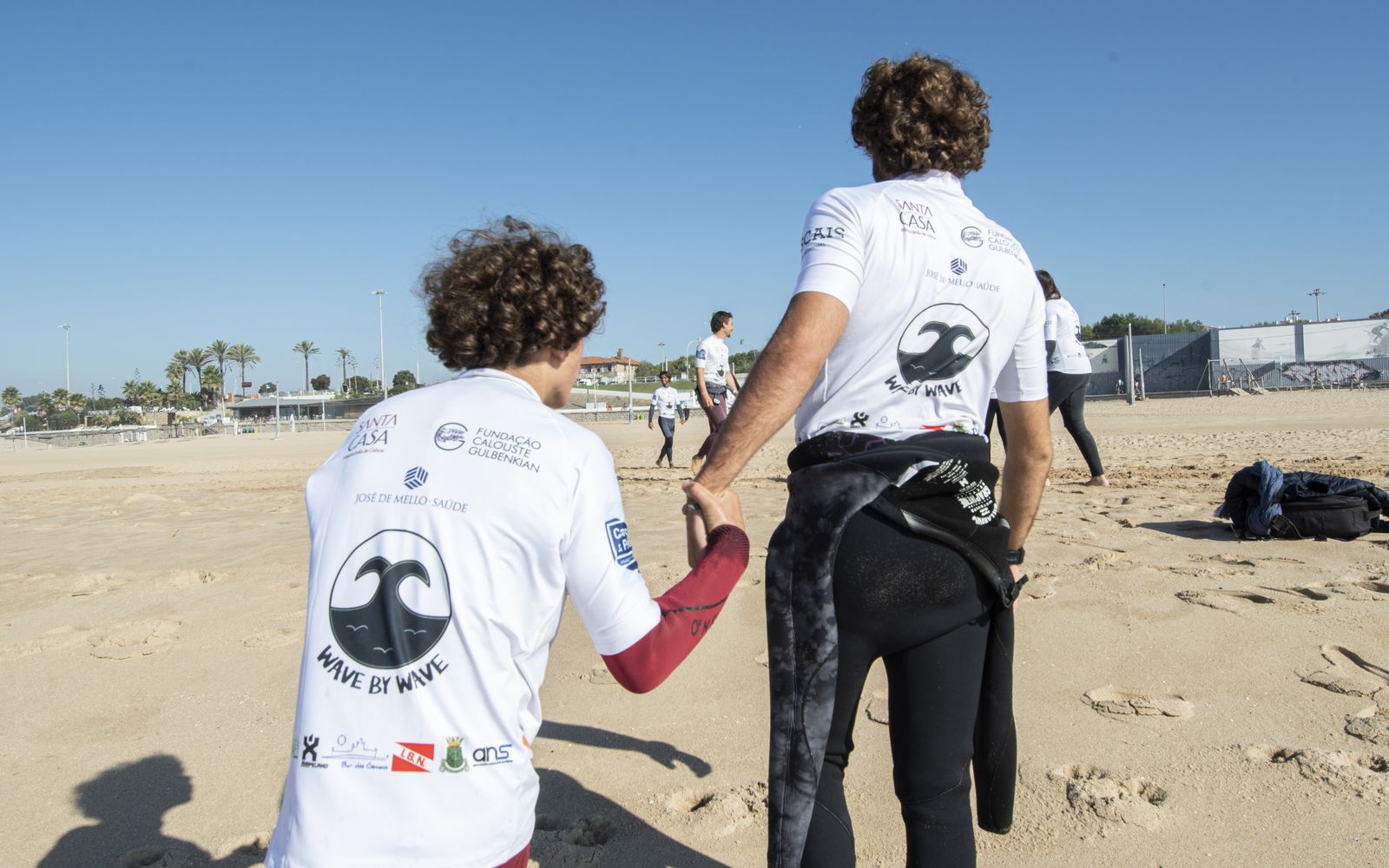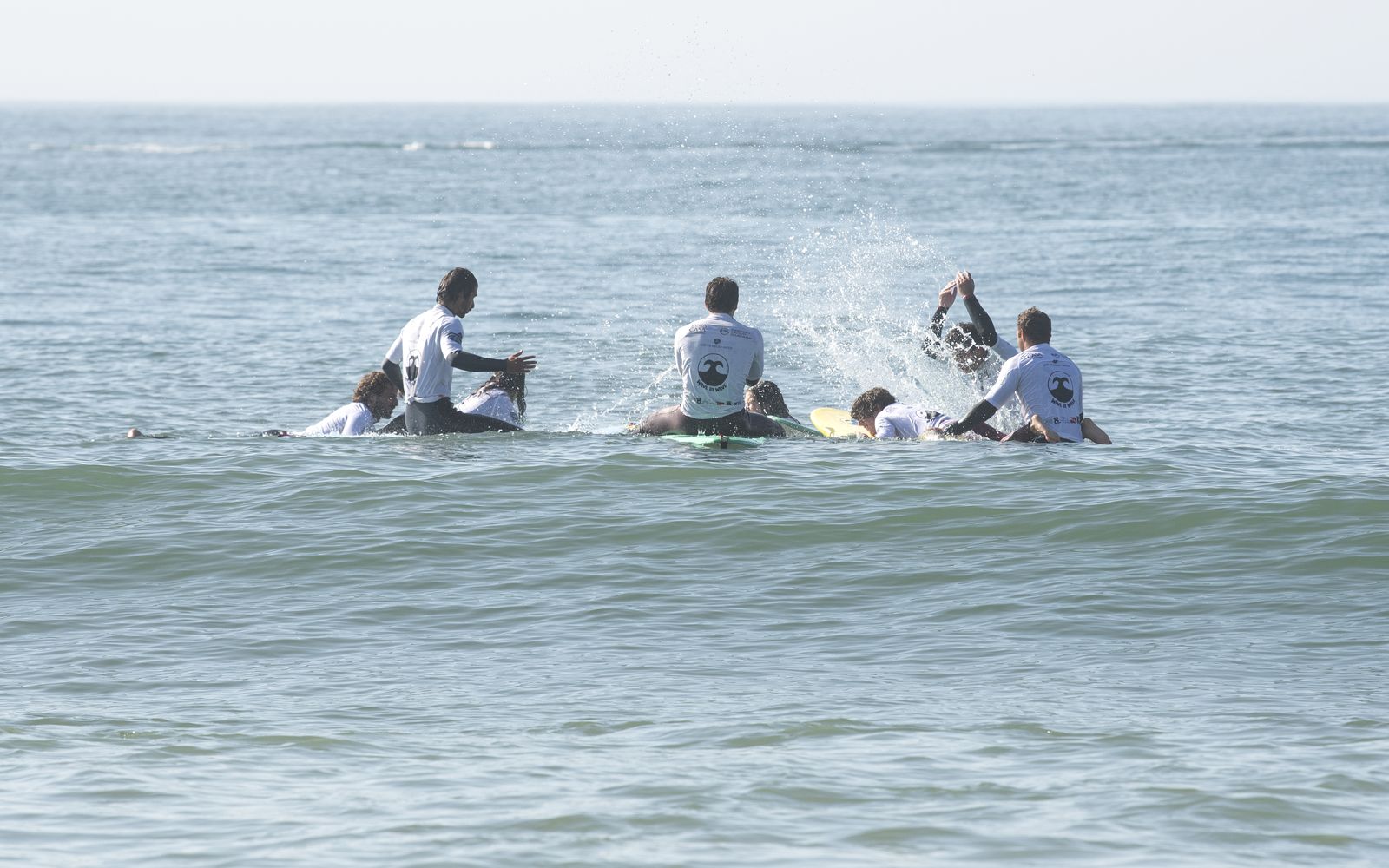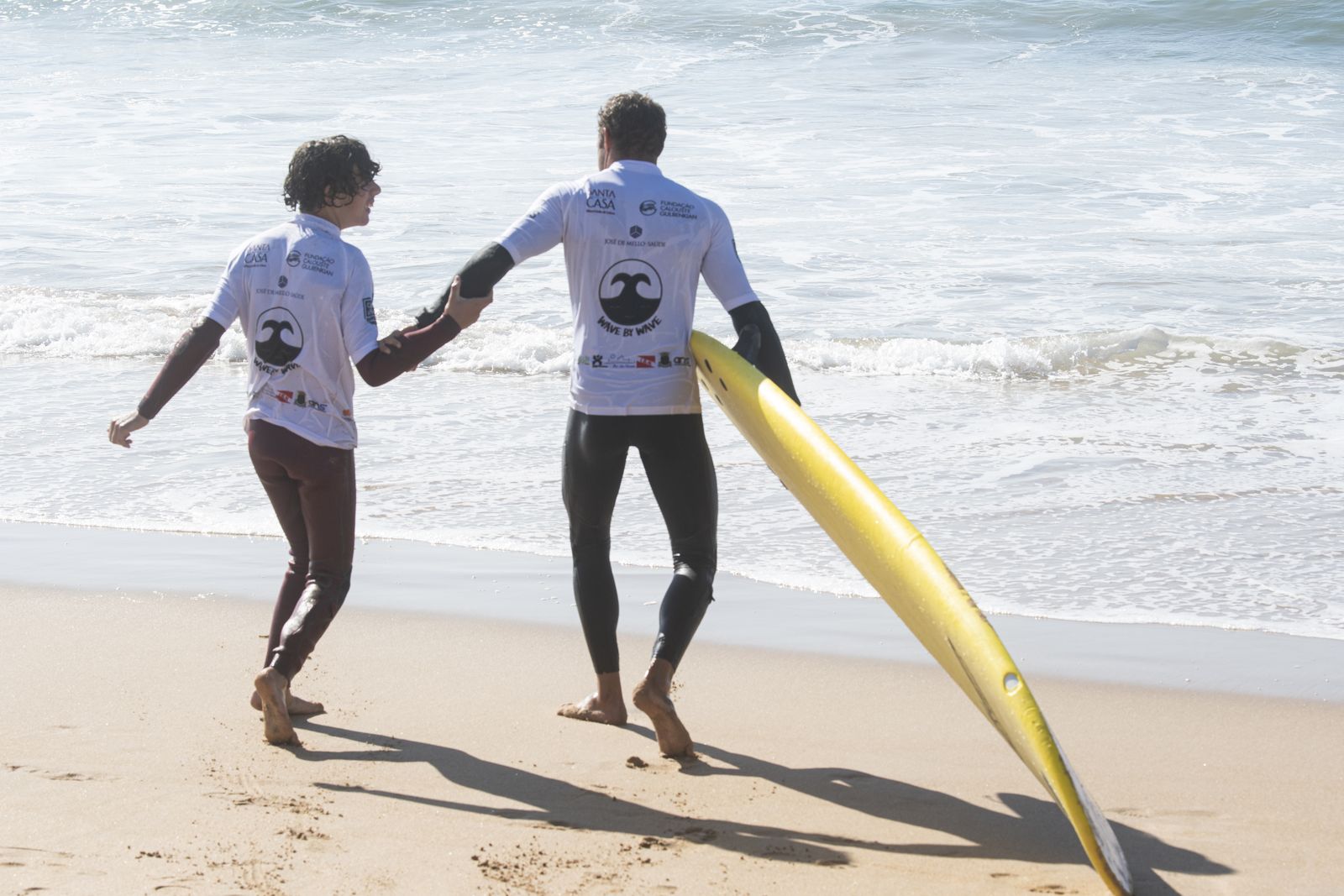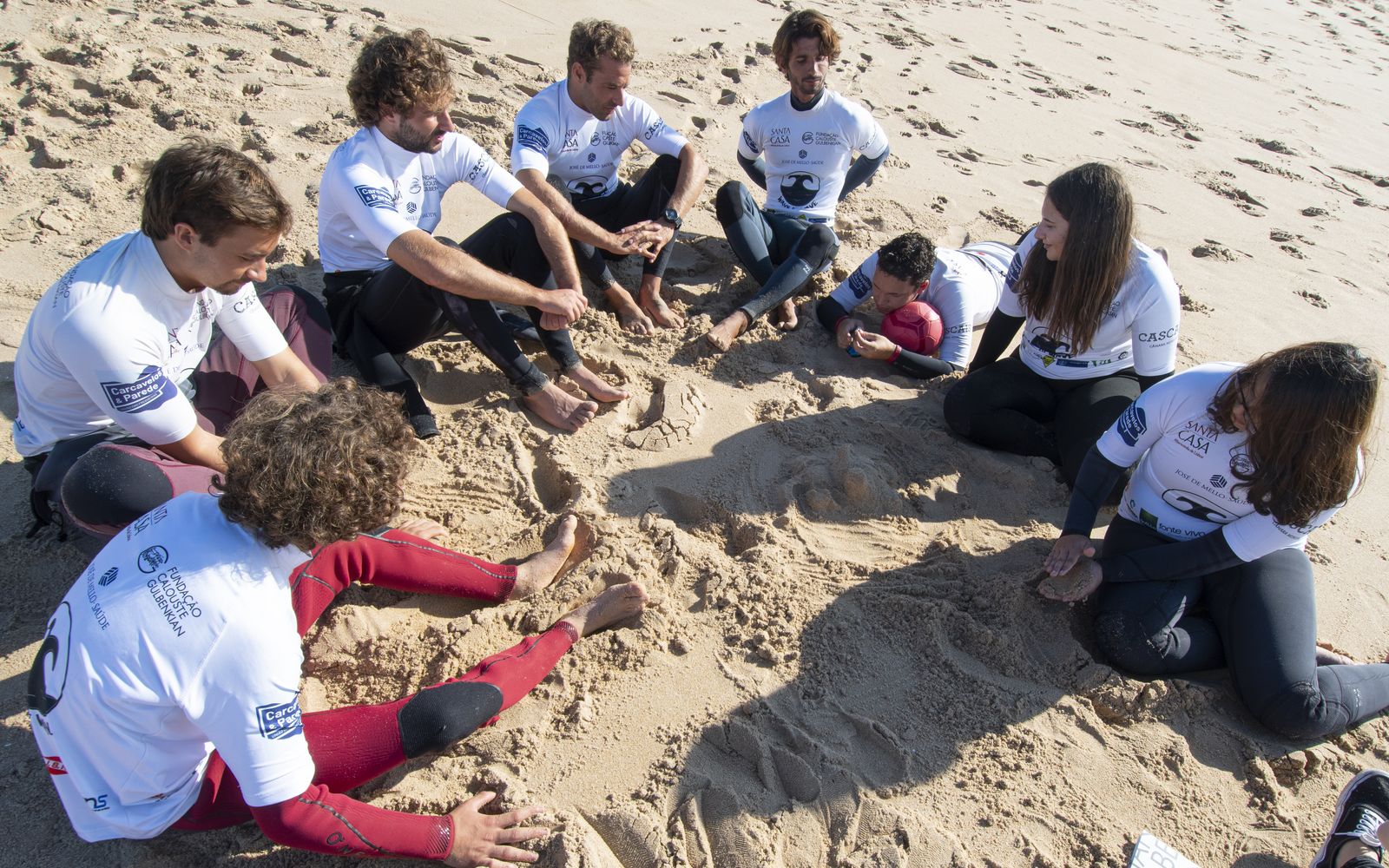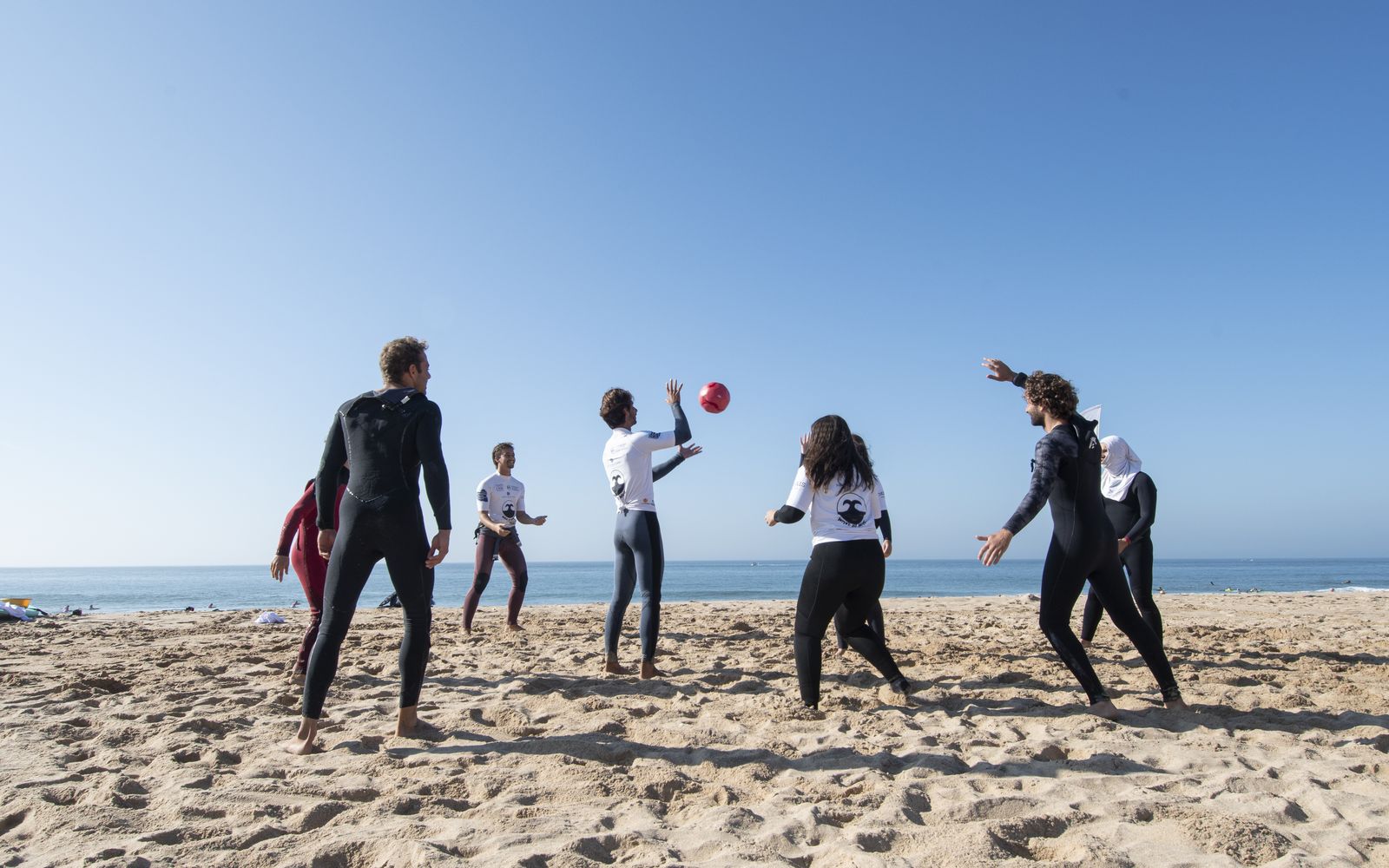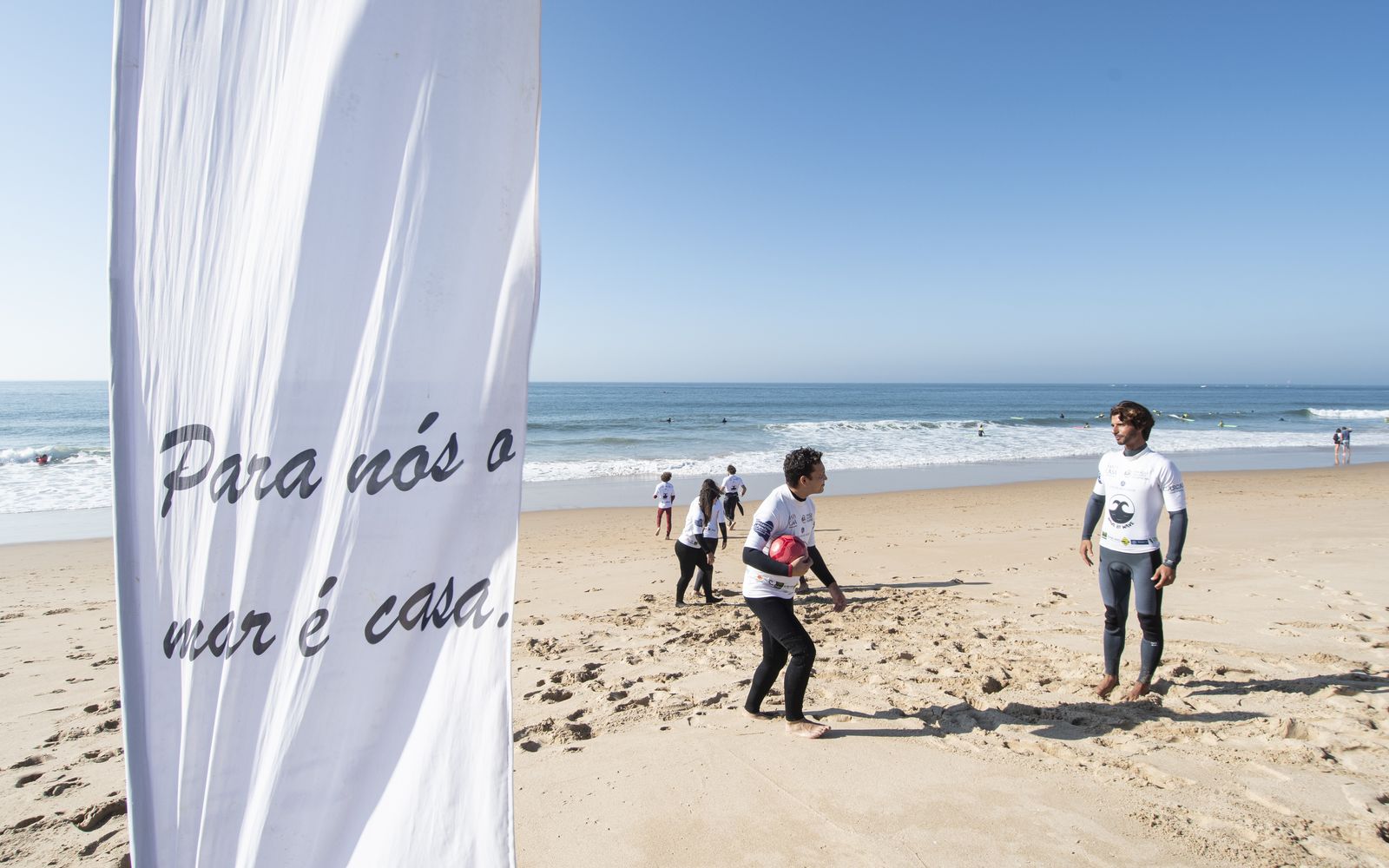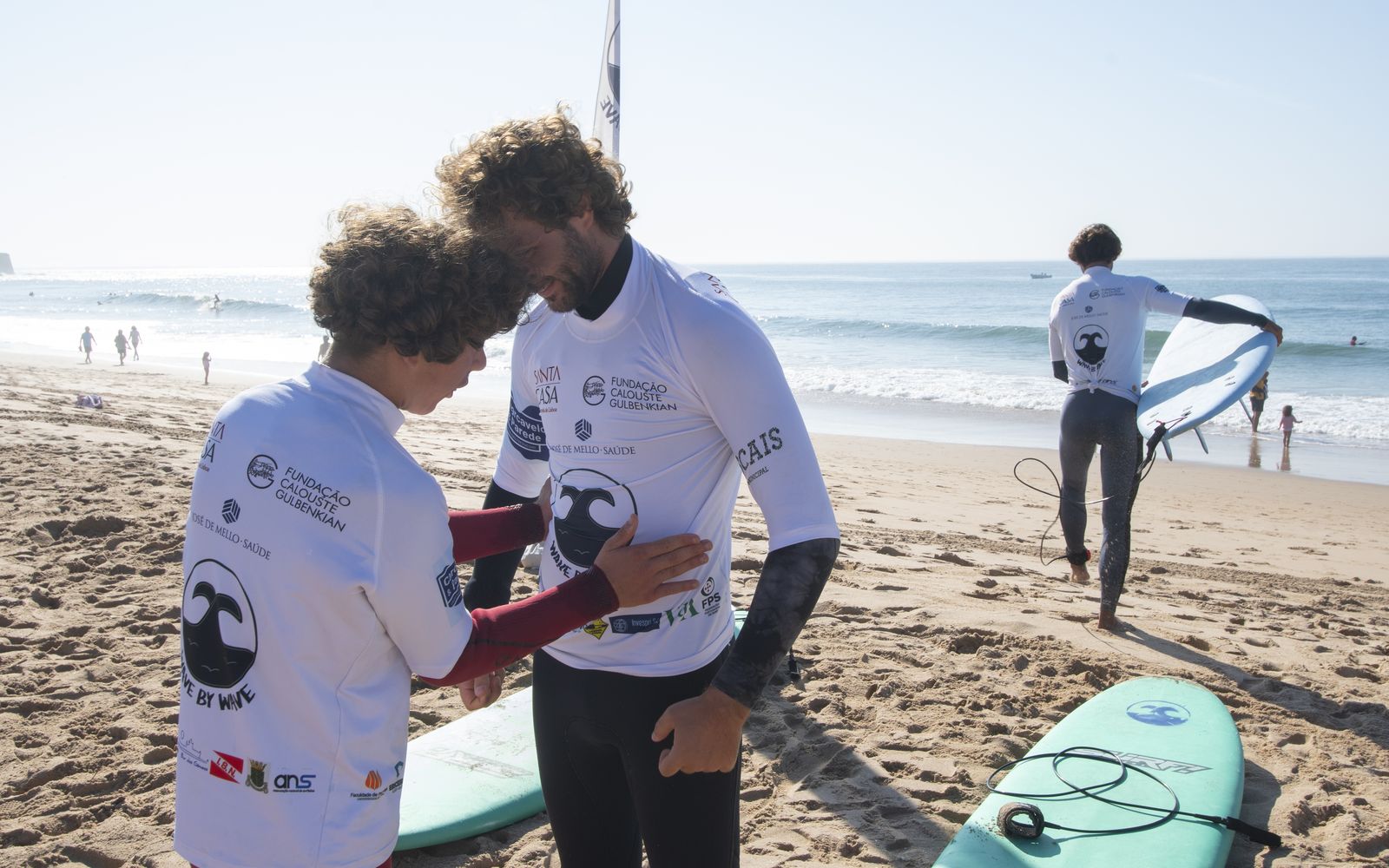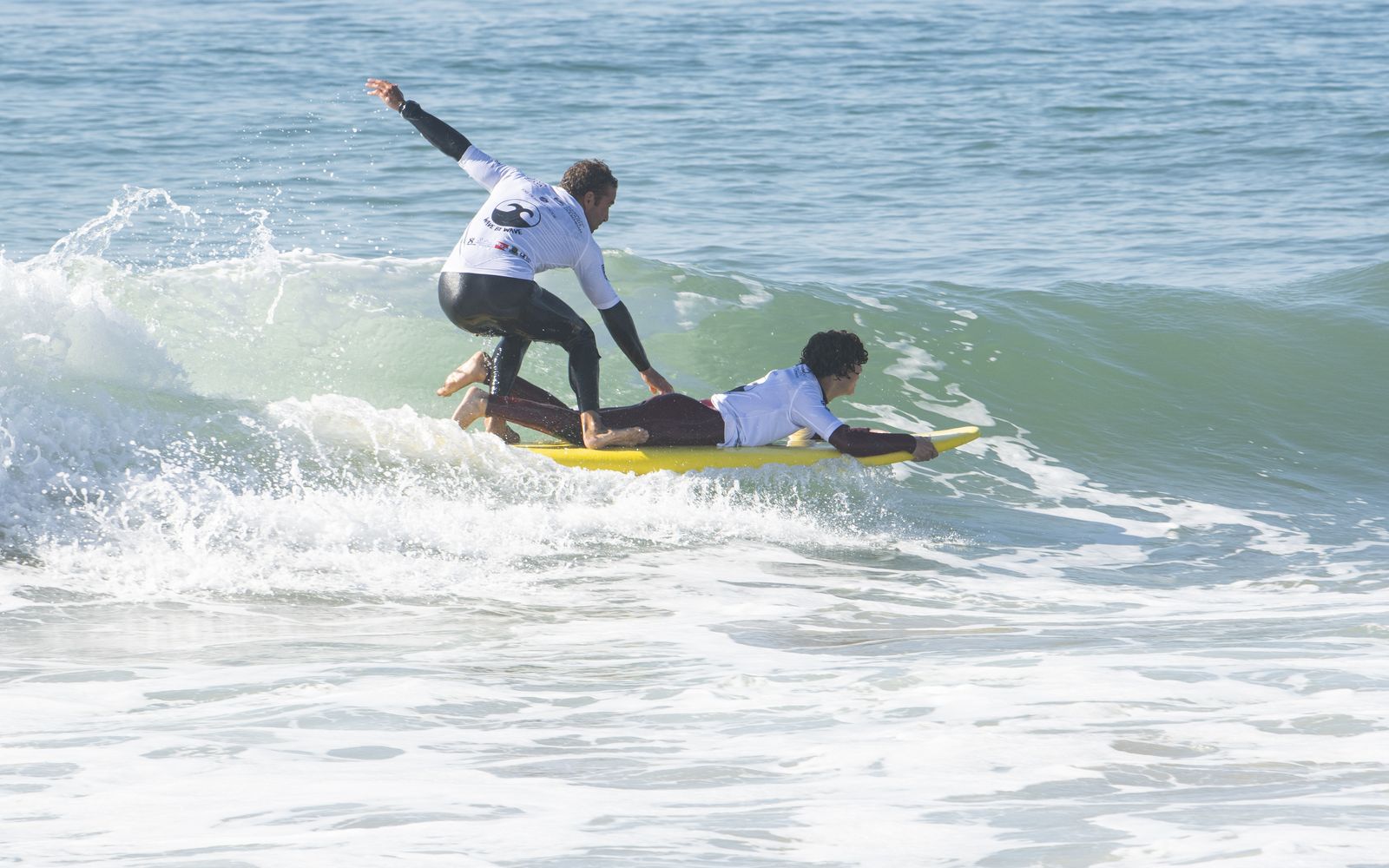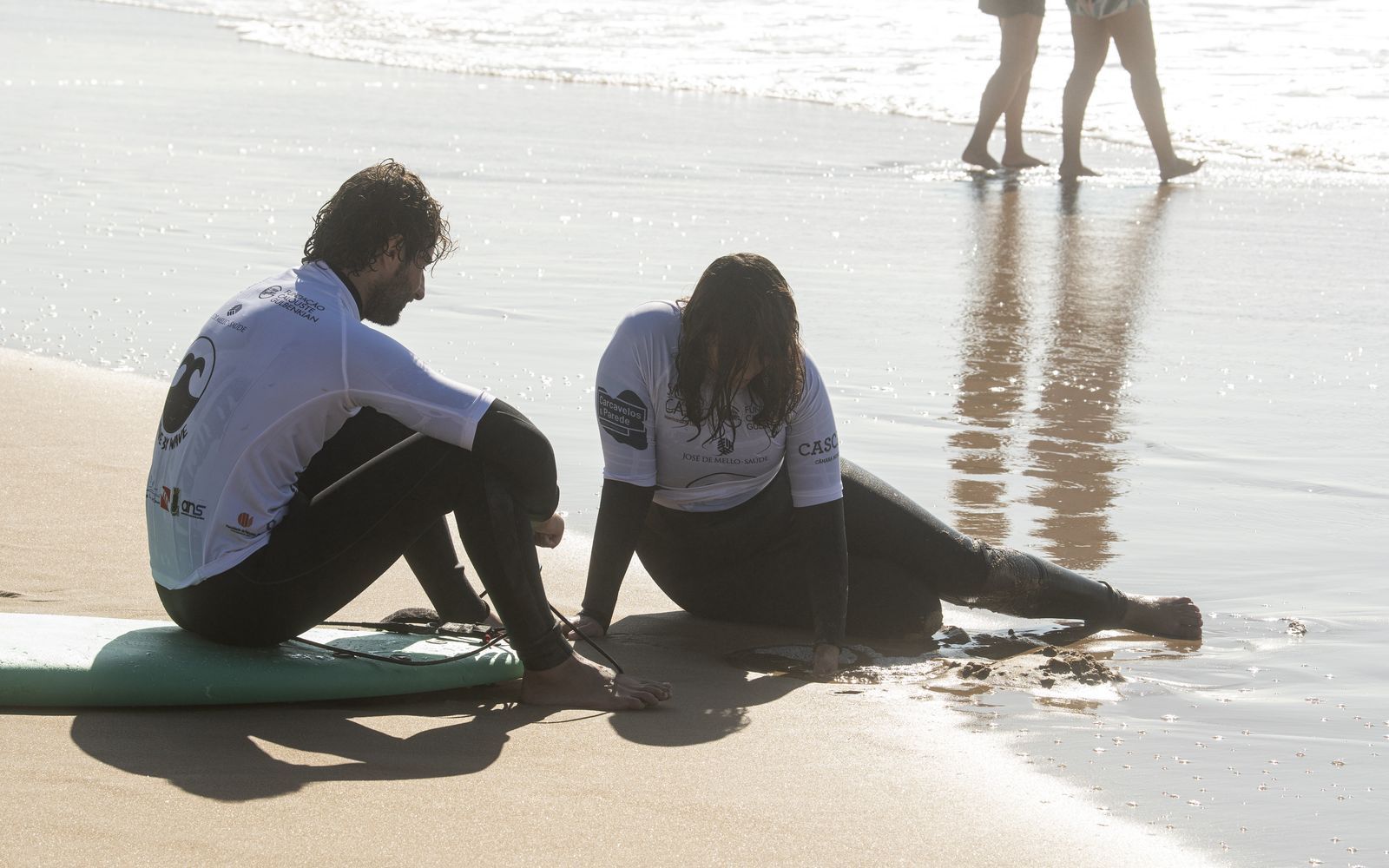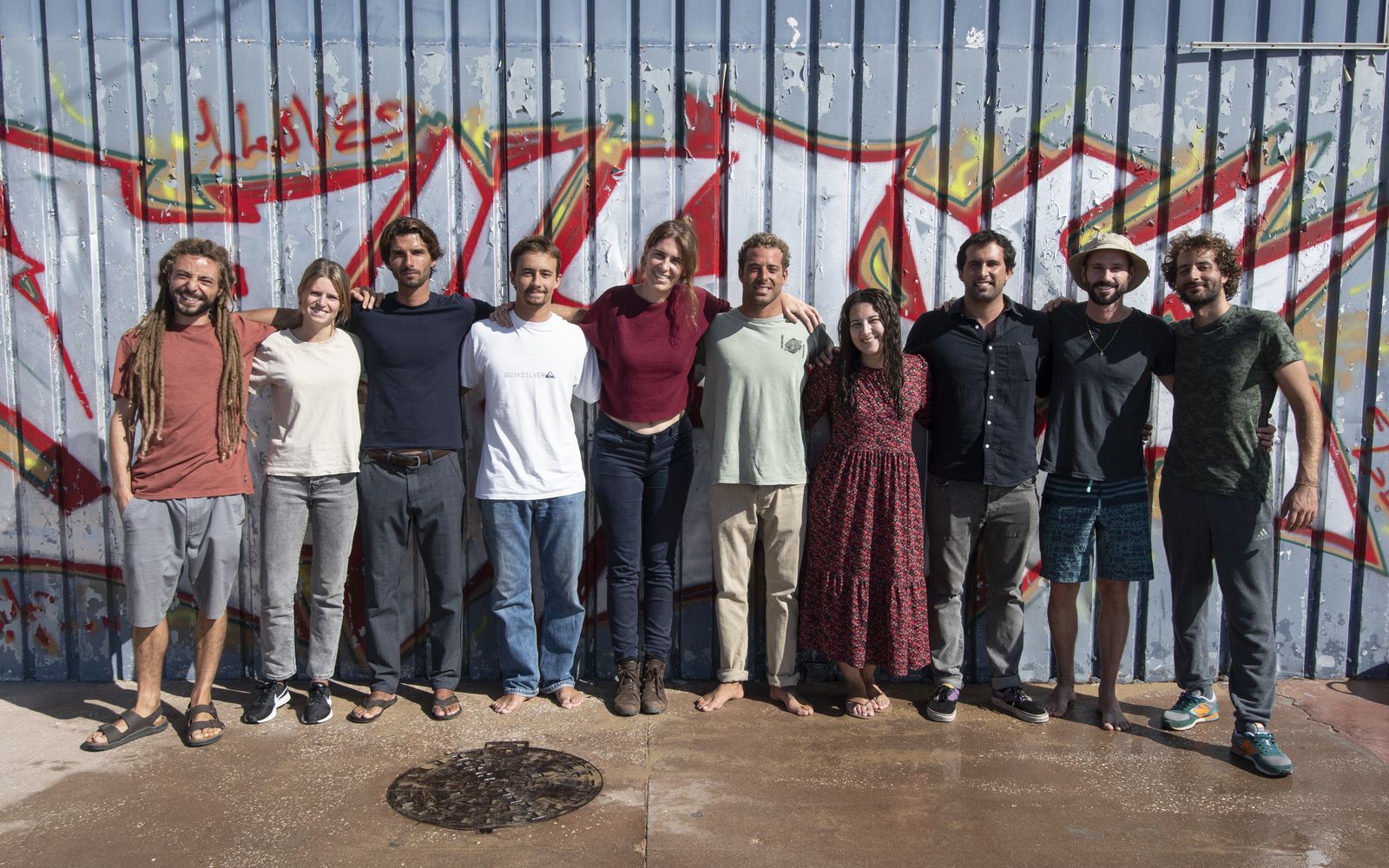Wave by Wave: surf as therapy
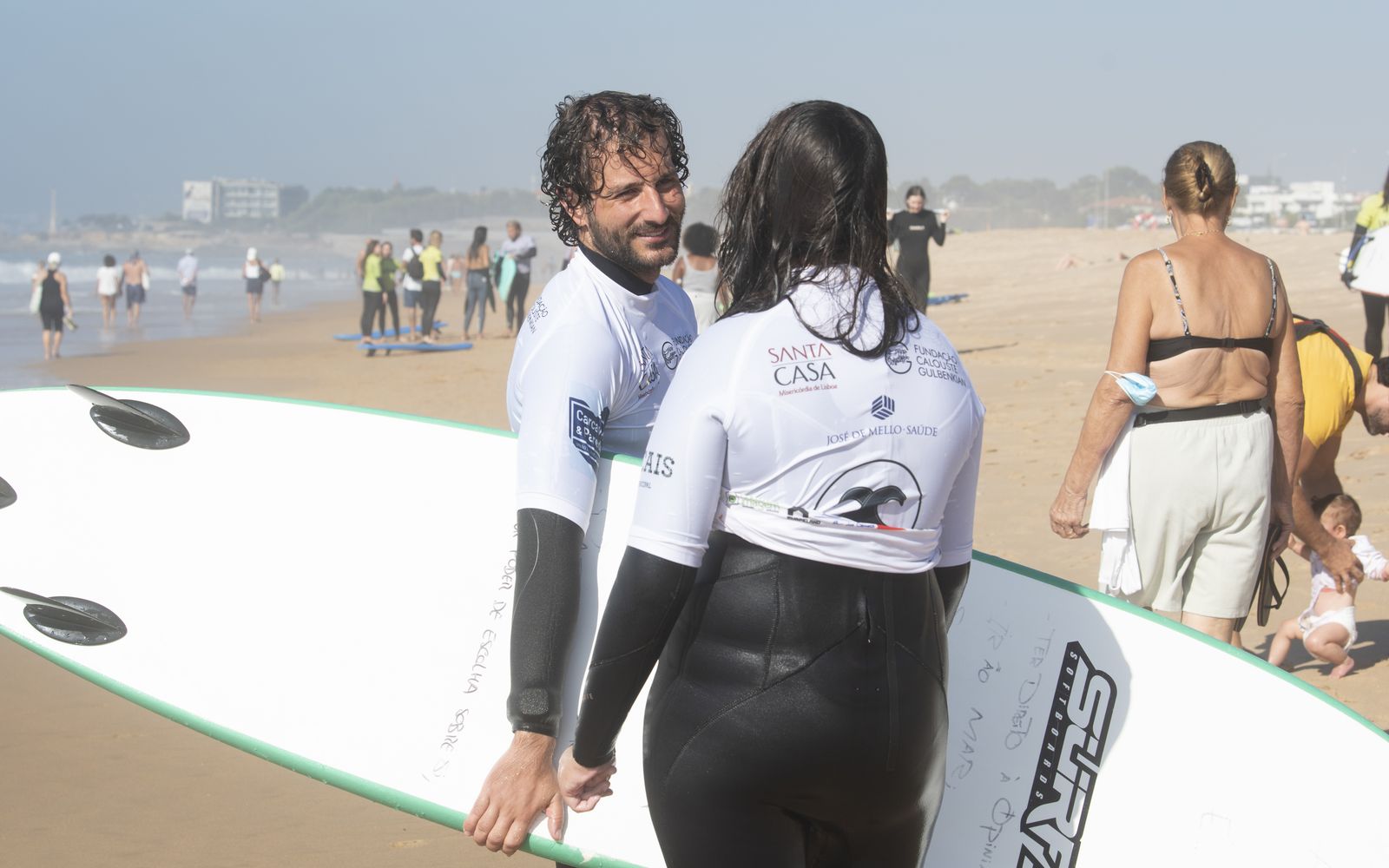
On an October morning at Carcavelos Beach the sun is high and the ocean is calm. “A perfect day to go out into the sea and surf”, says Marco, “surf therapist” and member of the “Wave by Wave” team.
This is the second week of the project’s annual intervention camps. On Tuesday, only three of the ten youngsters who are usually present showed up. “Some are still trying to adjust their schedules, others have been sick” explains Ema Evangelista, clinical psychologist and co-founder of the initiative.
Even so, the team doesn’t lose heart and the morning continues with the usual ritual. With their costumes already on, the “circle meeting” begins, a moment of presentation and reflection during which they can talk about anything: how their week has gone, how they are feeling, their thoughts and ideas. On this particular day, there is little desire to talk. Jorge, the oldest of the group, is impatient: “I want to go into the ocean”!
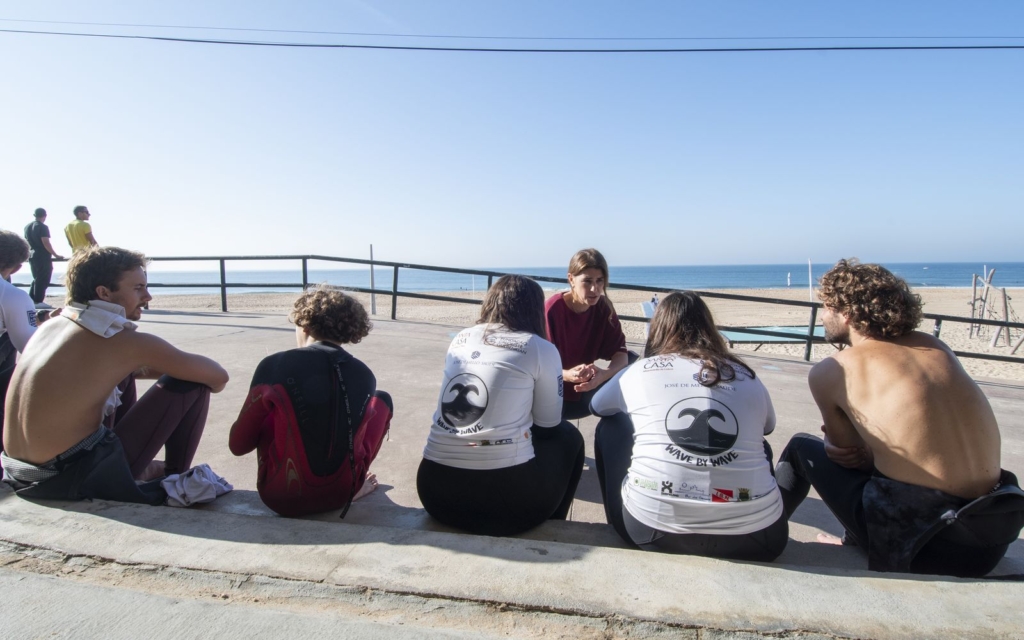
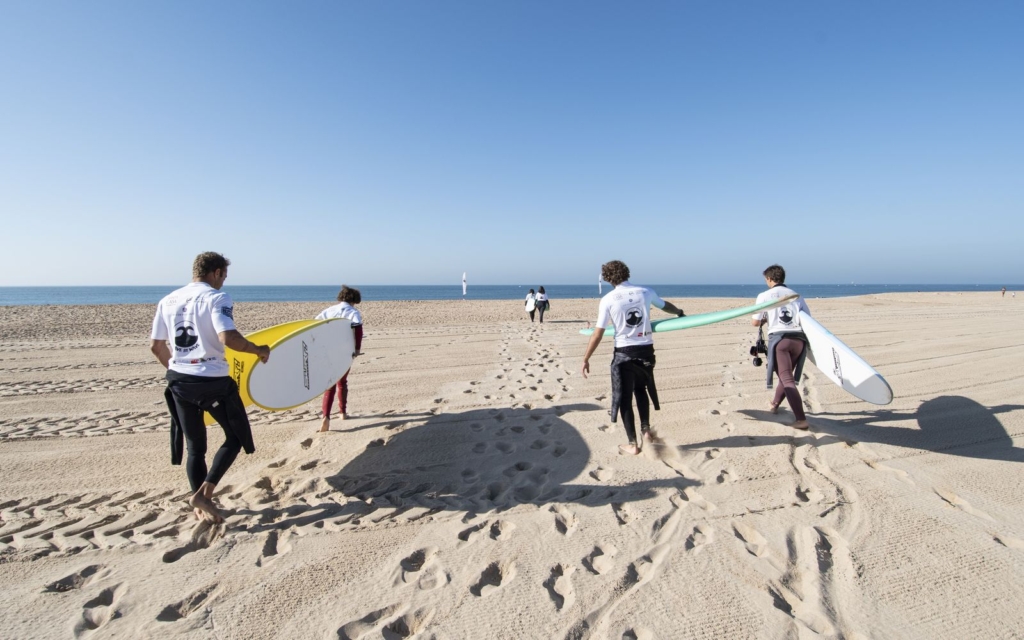
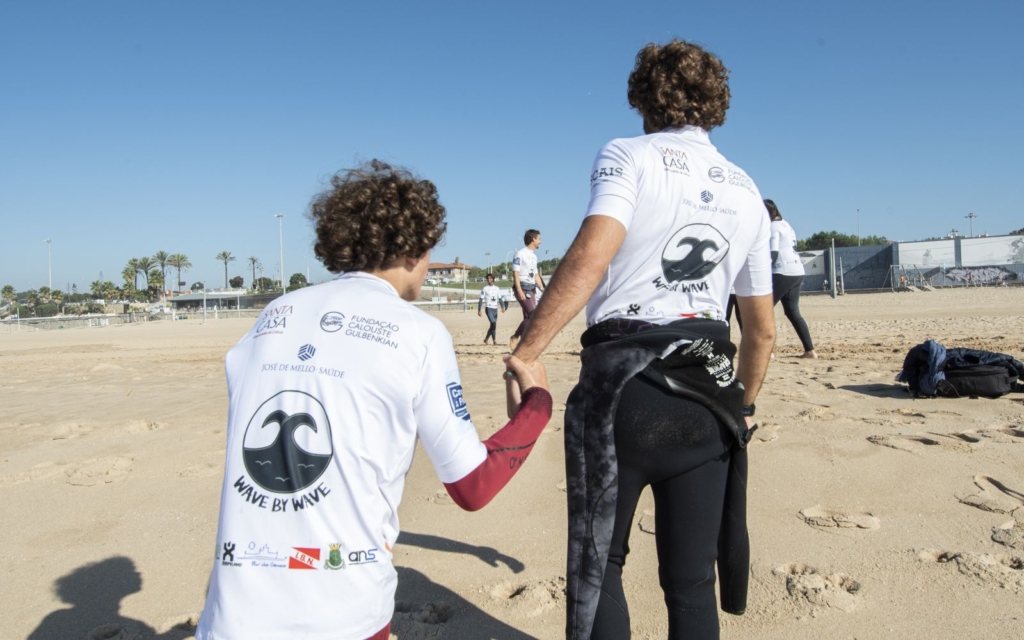
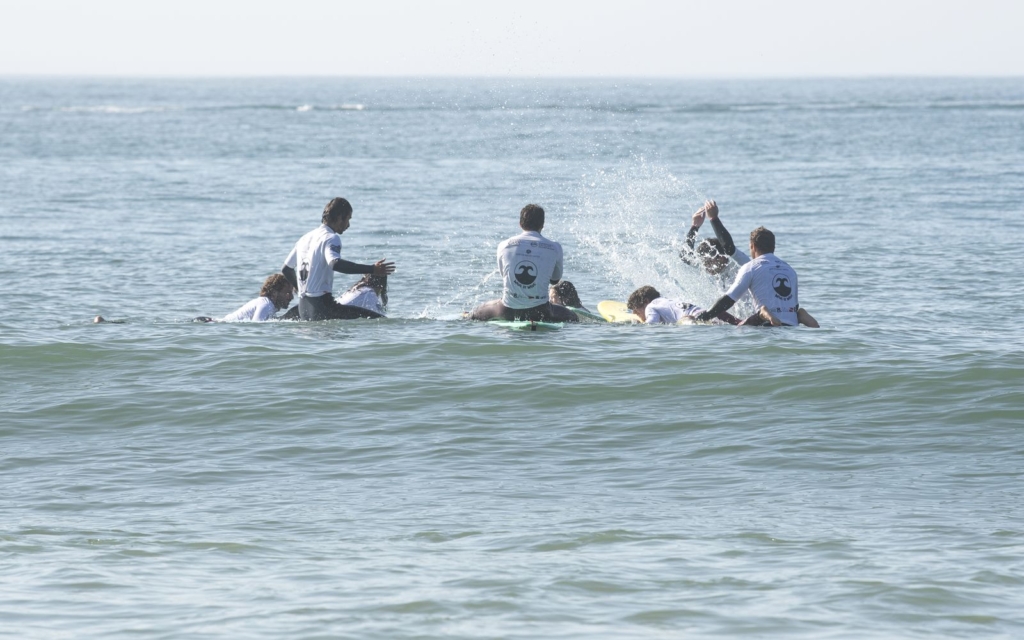
After a brief warm-up, it’s finally time to get into the water. With or without a surfboard, plunging into the ocean, with the support and supervision of the therapists, leaves the three youngsters in a great mood. Standing on his surfboard, Rubén surfs the waves wearing a contagious smile.
After the camp ends, it’s time for some final thoughts and goodbyes. Next week will bring another chance for a new adventure.
Surf to the rescue
Wave by Wave began as a summer project in 2016. Ema Evangelista, a clinical psychologist, was working in an association for the promotion of mental health and was invited to take part in a three-month camp by the Surf Salva Camp pilot project where José Ferreira (surfer and co-founder of Wave by Wave) worked. The project was based around the use of surfing as an intervention strategy for at-risk populations.
The desire to combine the principles of a therapeutic group intervention with a natural context – the ocean – and the practice of surfing was born from this first experience. Today, Wave by Wave “is a project that uses the ocean and surfing as therapeutic mediators, fundamentally for children and young people at risk, most of whom are institutionalised”, explains Ema.

For the psychologist, the potential of the project was felt from the very first session, which, she says, “was unforgettable”. “When we took the kids in they were labelled as very difficult: ‘they’re going to ruin the camp, they’re going to run away’… But this combination of a motivated, multidisciplinary team made of mental health professionals and surf specialists, with a well organised activity on a beach, captivated the kids in such a way that instead of running away, they often showed their best sides. Then, meaningful conversations about their lives and struggles started to happen and we understood that this was something that we had to keep on doing”.
The first Wave by Wave camp took place during Easter 2017, the year that also saw the start of the annual intervention camps, which take place throughout the school year. In four years of work, more than 200 children and youngsters of different ages have already participated in the project, coming from foster homes or institutions such as Santa Casa da Misericórdia de Lisboa, Casa Pia or Novo Futuro.
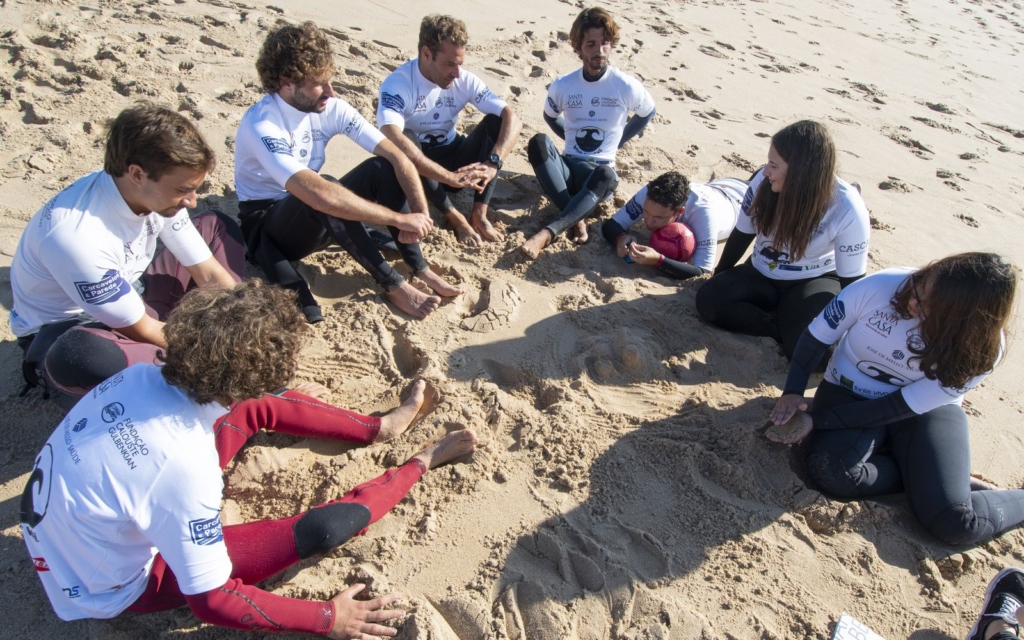
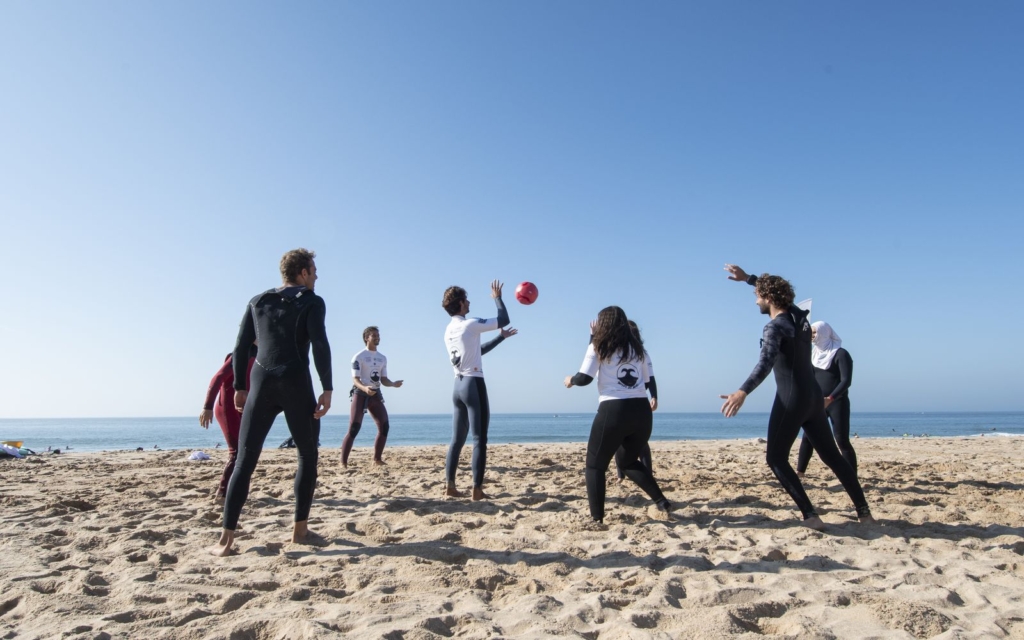
“In a wetsuit we’re all equal”
But, after all, what is so therapeutic about surfing?
First of all, it’s about being in touch with nature. The beach, the ocean, the sun and the sand provide a natural setting that allows an escape from daily routine and a return to peacefulness. Not to mention the benefits plunging in the cool ocean water, also widely proven. “Sometimes the kids come to us and do not want to talk, they just want to put on their wetsuits and go into the ocean. Other times it’s the other way round, they just want to sit and chat”, says Ema.
On the other hand, surfing also has its advantages: it is an individual sport, but you can’t do it well or progress without someone’s help, which “creates an opportunity to connect with an adult that can serve as a reference”. Furthermore, with a wetsuit on, the differences between people are less significant: “we are all equal”.
Finally, the unpredictability of the ocean – whether or not you can surf is always dependent on weather conditions – is also a boundary that serves a positive purpose. “These kids really need to experience boundaries, even when that frustrates them; it’s a great opportunity to work on their ability to deal with frustration,” explains the psychologist.
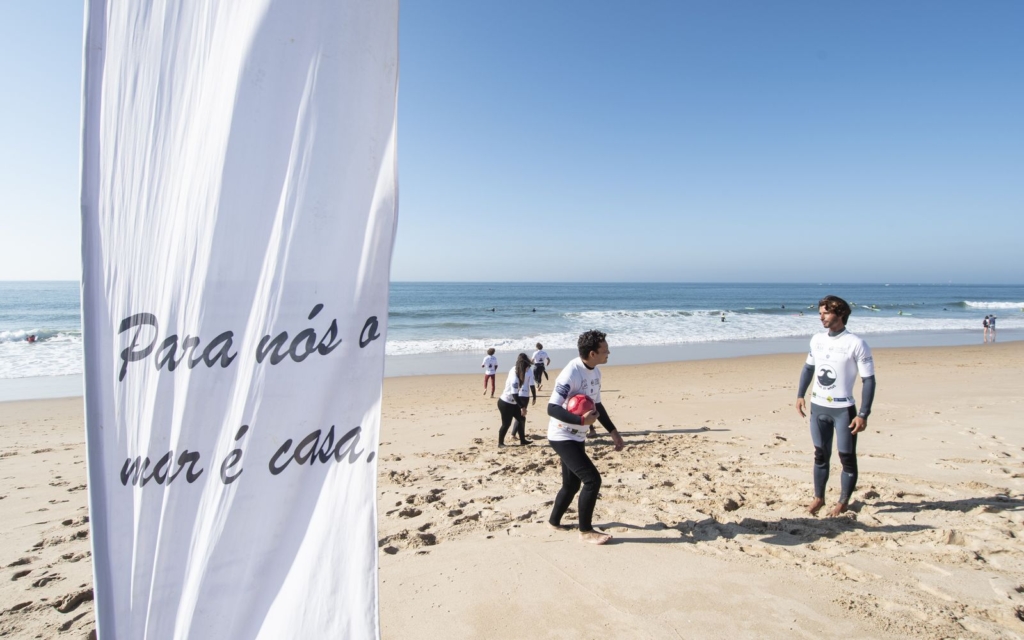
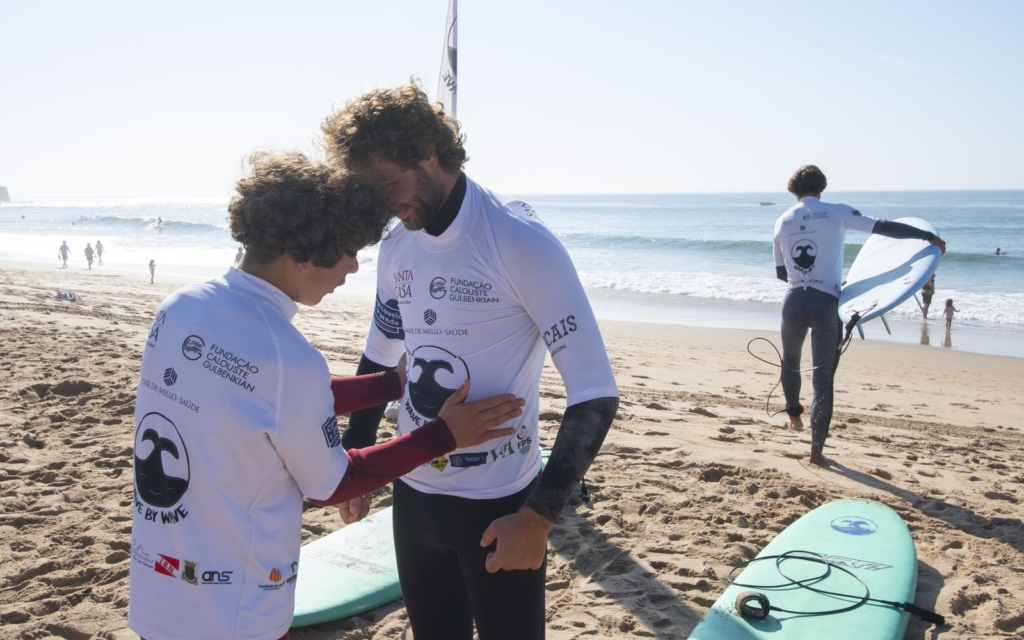
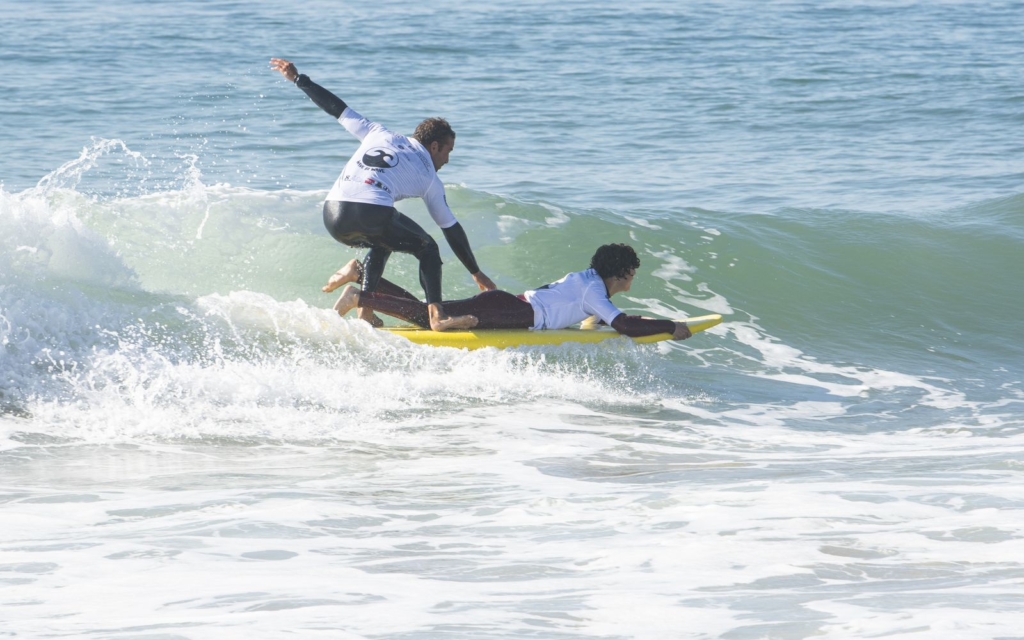
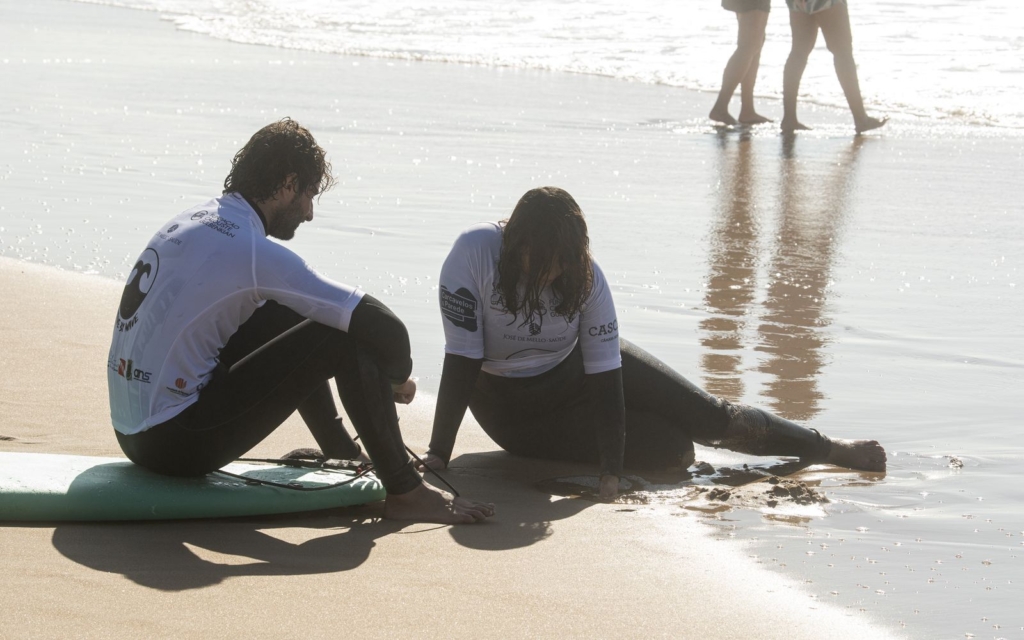
Consistency, continuity, predictability, intentionality
Let there be no doubt: the children who come to Wave by Wave live in very dramatic situations, Ema assures us. The team deals with very tough stories every day and each one is unique and individual – mental illnesses, situations of abandonment and even suicide attempts.
This is why all the project’s actions are based on the intervention model called MAR – Model of Action-Reflection. With this model, which involves meetings prior to the sessions, evaluation meetings and also weekly team meetings, the teams “spend almost as much time with the children as they do thinking about them”, explains Emma.
One of the foundations of this model, and of the work done with children, is precisely the multidisciplinary nature of the work team. All camps have at least one mental health coordinator, one surf coordinator, one mental health technician and one certified surf technician and lifeguard.
It is this carefully chosen team that must guarantee consistent, continuous, predictable and committed work, fulfilling the four main pillars that govern the project and allow it to function as a real safety net and a source of confidence for the young people involved.
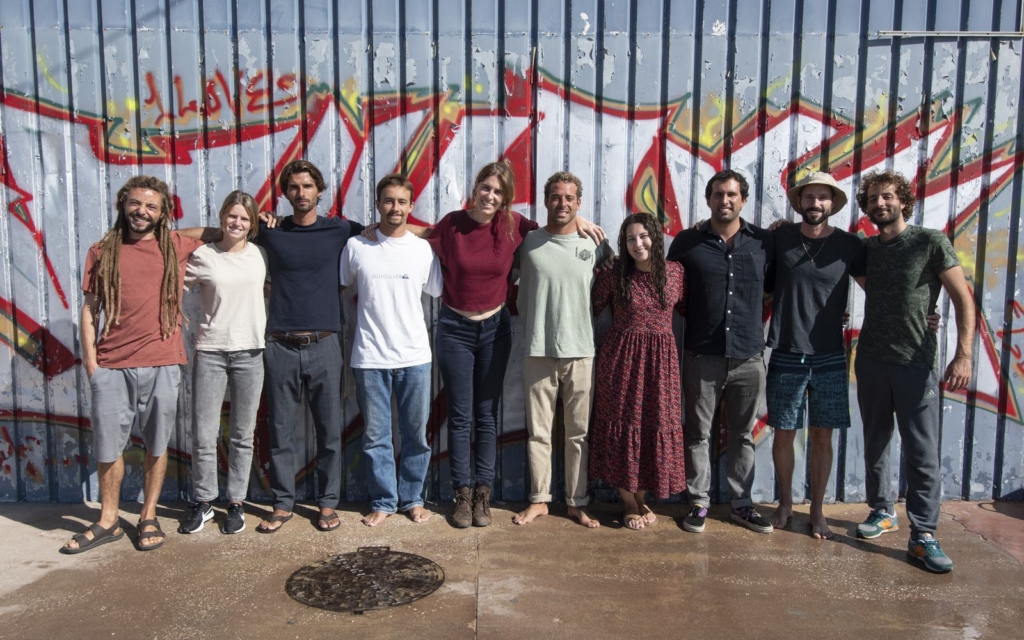
For Ema Evangelista, the greatest achievement of the project is the gratitude that the people responsible for the children (the institutions or the families themselves) show for the work that has been developed, which is felt in the comments and the many tahnks they receive every day.
Among their aspirations for the future is the desire to reach a cooperation agreement with the Portuguese Social Security system, which would give them more stability and capacity to respond, and to continue following the youngsters with whom they work, contributing to helping them integrate into society. “There are still many projects for children and youngsters at risk that are very fleeting. We don’t want to be fleeting, we want to remain present in the lives of these kids”.
The Wave by Wave Project is promoted by the Surf for Good association and has been supported by the Calouste Gulbenkian Foundation since 2017. Currently it is supported by the Active Citizens Program.

